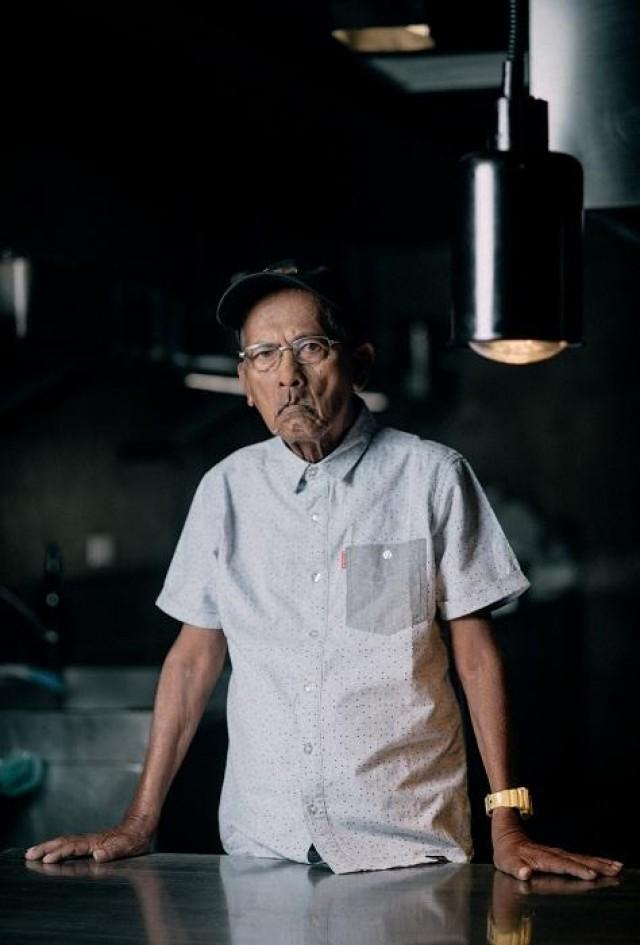Meet the four Cebuanos representing the PHL on Netflix’s ‘Street Food Asia’
"Street Food Asia" has started streaming on Netflix with the 9th episode diving into the famed street food of Cebu. We’re not just talking about the usual street grub like sugbo (grilled food) or pungko-pungko (finger food) found in the Queen City of the South.
We’re talking unique and fascinating fare, with incredible stories behind them, served and prepared by local heroes. The Cebu episode features four.
RELEATED: Why did Netflix choose Cebu as their Philippine destination for ‘Street Food Asia’?
TATAY ENTOY

At 71, Florencio Escabas is the picture of a hardworking man. Fondly called ‘Tatay Entoy’ by his neighbors, he served as a street food pioneer in his hometown of Cordova. Together with his wife, they started serving Bakasi (reef eel) in their coastal town. According to Tatay Entoy, they cook Bakasi in various ways but their best sellers are fried Bakasi and Nilarang Bakasi, a sour stew that seems to be a cross between Sinigang and Tinola.
“Our town is abundant in eels, so it made me think, ‘what would be a good way to use these eels?’ So I tried frying it,” Tatay Entoy shared with GMA News Online in Cebuano on the sidelines of the Netflix launch on April 24, recalling how he started serving eel as a streetside dish. Bakasi turned Tatay Entoy’s life around and gave his family — and community — a better life.

Need a wellness break? Sign up for The Boost!
Stay up-to-date with the latest health and wellness reads.
Please enter a valid email address
Your email is safe with us

“Pretty soon, there were several of us serving Bakasi. This dish has helped a lot of people in our community. To some of us, it is our main source of income.”
Because of his innovation, people flock to Cordova for a bite of these eels. On a regular Sunday, they could sell as much as 40 kilos of Bakasi in one day.
However, it’s not just the great taste that keeps people coming back for more. According to Tatay Entoy, eating Bakasi increases one’s appetite in the bedroom.
“For those who were having a hard time conceiving, they come to Cordova to feast on Bakasi. We have several customers who can attest to this.”
NANAY LESLIE

Unapologetic about her claim, Leslie Enjambre proudly states that her Lechon is the best — not just in their town of Talisay but in the whole country.
A self-confessed terror in the kitchen, Nanay Leslie is a hands-on businesswoman — from the procurement of ingredients (like the native pig grown and supplied from Negros) to the prepping to the roasting, not a single detail is missed by this third generation lechonera. Even the wood used to roast the pigs is not the coal commonly used by many lechon makers.
“My grandmother is the mother of the lechon industry. She started the business in 1940’s and now I’m managing it. Soon, I hope my kids will take over,” Nanay Leslie said. And the recipe hasn’t changed ever since.

According to her, their lechon is on a league of its own because of the quality of their ingredients and the combination of flavors and timing that leads to a sumptuously juicy and irresistibly crisp pig that will complete any celebration.
Today, Nanay Leslie serves almost 300 lechons in a month, but could go as high as a thousand full lechons during the holidays.
“[This job is] very fulfilling for us, especially when you get a call from a satisfied customer saying ‘it’s so good!’ That is something that you cannot buy.”
TITA RUBY

Rubilyn Manayon became a part of "Street Food Asia" out of pure chance. The production team was on their way to film at Tatay Entoy’s when they chanced upon her carinderia — so humble and small, it was too easy to miss.
“They were just passing by and they dropped by my store and started asking about my dishes,” shared the still-flustered-but-ecstatic Tita Ruby. “Ma’am Suzy (Suzy Beck, Producer) saw the vegetable lumpia and asked me about it, so they ordered a few pieces at first. Then a few minutes later, they came back for more.”

She got a call from another Netflix staff the next day, telling her she was chosen to be featured on the show. She declined, her shyness getting the better of her but changed her mind when she learned of Tatay Entoy’s appearance. A good thing because her fare, especially her lumpia — 200 piece of which get wiped out every day — finally gets the recognition it deserves.
Tita Baby opened her eatery four years ago. Today, she has a college graduate and another scholar on his way to earning his diploma.
MANONG IAN

Tuslob-Buwa is one of the most unique dishes you’ll ever have in Cebu. It’s a dish that’s “known by everyone but not everyone has tasted it”, according to Azul restaurant owner Ian Secong.
“They don’t want to try it, because it’s usually just served deep in back streets and alleys of the city, making it difficult and intimidating to fine for a lot of people.
Thankfully, Manong Ian decided to revive this local dish and serve it in his restaurant some seven years ago. He made his own version, featuring a thick, bubbling gravy made with sautéed onions, garlic and pig brains.

“Back then, this dish was eaten by those who cannot afford a lot of meat, so they just use the juices and leftovers and eat it with puso (steamed rice wrapped in banana leaf). Now, there are more restaurants in the city that created their own take on Tuslob-Buwa.” — LA, GMA News
'Street Food Asia' is now streaming on Netflix.

Need a wellness break? Sign up for The Boost!
Stay up-to-date with the latest health and wellness reads.
Please enter a valid email address
Your email is safe with us









